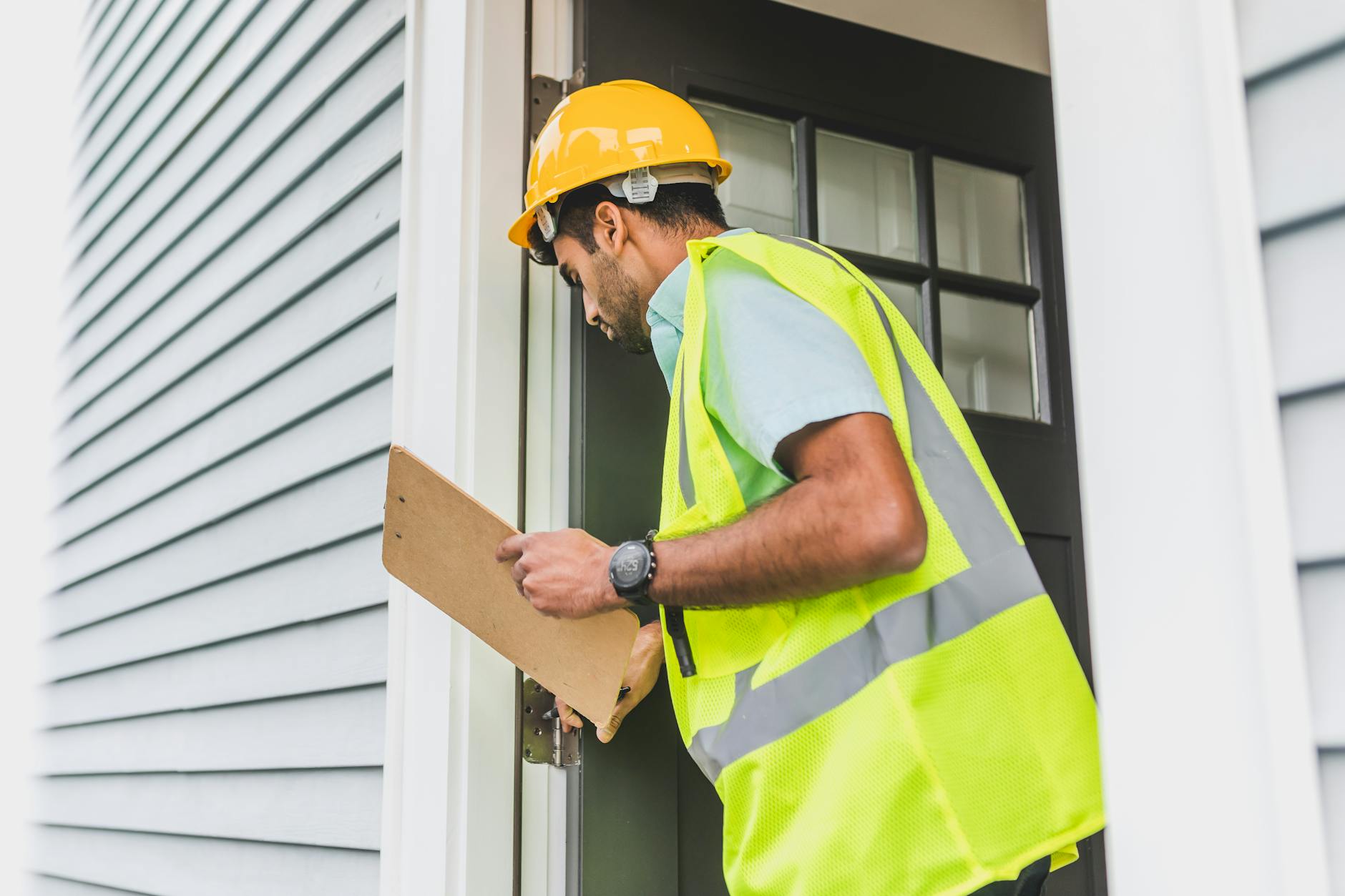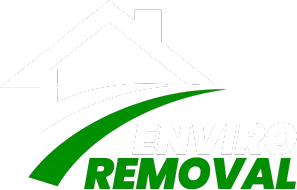
What to Expect During an Asbestos Inspection in Albany
The Complete Guide to Asbestos Inspections in Albany: What You Need to Know
🏠 Is your Albany home hiding a silent threat? Asbestos, once hailed as a miracle material, now strikes fear into the hearts of homeowners. But don't panic just yet! Understanding the risks and taking action can protect you and your loved ones from this invisible danger.
Asbestos inspections are your first line of defense against potential health hazards lurking in your walls, floors, or ceilings. But navigating the world of asbestos inspections can be overwhelming. Where do you start? Who can you trust? And what exactly happens during an inspection? 🤔
In this comprehensive guide, we'll walk you through everything you need to know about asbestos inspections in Albany. From understanding the different types of inspections to choosing a qualified inspector, we've got you covered. So, take a deep breath, and let's embark on this journey to ensure your home is safe, sound, and asbestos-free!
Understanding Asbestos and Its Risks
What is asbestos?
Asbestos is a naturally occurring mineral fiber that was widely used in construction materials due to its heat-resistant properties and durability. It consists of six different types of silicate minerals, each with unique characteristics but all potentially harmful to human health.
Health hazards associated with asbestos exposure
Exposure to asbestos fibers can lead to severe health issues, including:
Asbestosis (scarring of lung tissue)
Lung cancer
Mesothelioma (cancer of the chest and abdominal linings)
Pleural thickening
These conditions often develop decades after initial exposure, making early detection crucial.
Common locations of asbestos in buildings
Asbestos can be found in various parts of older buildings:
Location Examples Insulation Attic, wall, and pipe insulation Flooring Vinyl tiles, sheet flooring Roofing Shingles, felt underlayment Walls Drywall, joint compound HVAC systems Duct wrap, furnace insulation
Why Albany residents should be concerned
Albany's rich architectural history means many buildings may contain asbestos materials. Residents should be aware of the potential risks, especially when renovating older homes or working in vintage commercial spaces. Understanding asbestos and its risks is the first step in protecting oneself and loved ones from potential exposure.

The Importance of Asbestos Inspections
Now that we understand what asbestos is and its associated risks, let's explore why asbestos inspections are crucial, especially in Albany.
Legal Requirements for Asbestos Inspections in Albany
Albany has strict regulations regarding asbestos management, particularly for buildings constructed before 1980. Here's a quick overview of the legal requirements:
Pre-renovation inspection: Required for all buildings before any renovation work
Pre-demolition inspection: Mandatory before any building demolition
Periodic inspections: Required for public buildings and schools
Building Type Inspection Frequency Public buildings Every 3 years Schools Every 6 months Residential Before sale or major renovation
Benefits of Early Detection
Early asbestos detection through professional inspections offers numerous advantages:
Health protection: Identifies potential hazards before they become airborne
Cost savings: Allows for planned, controlled removal rather than emergency remediation
Legal compliance: Ensures adherence to local and state regulations
Property value: Maintains or increases property value by addressing issues proactively
Consequences of Neglecting Inspections
Failing to conduct proper asbestos inspections can lead to severe repercussions:
Health risks: Increased chance of asbestos-related diseases for occupants
Legal penalties: Fines and potential lawsuits for non-compliance
Higher remediation costs: Emergency removal is often more expensive
Property devaluation: Discovered asbestos issues can significantly decrease property value
With these factors in mind, it's clear that asbestos inspections are not just a legal requirement but a crucial step in protecting health, property, and finances. Next, we'll delve into the various types of asbestos inspections available to property owners in Albany.

Types of Asbestos Inspections
When it comes to identifying and managing asbestos in buildings, various inspection methods are employed. Each type serves a specific purpose and provides valuable information about the presence and condition of asbestos-containing materials (ACMs). Let's explore the four main types of asbestos inspections:
A. Visual Inspections
Visual inspections are the first line of defense in asbestos detection. During this process, a trained inspector visually examines the building for potential ACMs. They look for:
Suspicious materials in walls, ceilings, and floors
Signs of deterioration or damage in known ACMs
Areas where asbestos might have been used historically
While visual inspections are non-invasive and cost-effective, they cannot definitively confirm the presence of asbestos without further testing.
B. Air Sampling
Air sampling is crucial for assessing the concentration of airborne asbestos fibers. This method involves:
Collecting air samples using specialized equipment
Analyzing the samples in a laboratory
Comparing results to safety standards
Air sampling is particularly important in:
Assessing the effectiveness of asbestos containment measures
Monitoring air quality during and after asbestos removal projects
C. Material Sampling
Material sampling involves collecting small samples of suspected ACMs for laboratory analysis. This method:
Provides definitive confirmation of asbestos presence
Determines the type and percentage of asbestos in the material
Helps in developing appropriate management or removal strategies
D. Comprehensive Building Surveys
Comprehensive building surveys combine multiple inspection methods to provide a thorough assessment of asbestos presence and condition throughout a structure. These surveys typically include:
Survey Component Description Visual Inspection Thorough examination of all accessible areas Material Sampling Collection and analysis of suspected ACMs Documentation Detailed reporting of findings and recommendations Risk Assessment Evaluation of potential health risks based on ACM condition
Comprehensive surveys are essential for developing long-term asbestos management plans and ensuring regulatory compliance.

Choosing a Qualified Asbestos Inspector in Albany
When it comes to asbestos inspections, selecting the right professional is crucial for your safety and peace of mind. Here's what you need to consider when choosing a qualified asbestos inspector in Albany:
Required certifications and licenses
Ensure that the inspector you choose holds the necessary certifications and licenses:
New York State Department of Labor (NYSDOL) Asbestos Handler Certificate
EPA Asbestos Building Inspector Certification
OSHA Hazardous Waste Operations and Emergency Response (HAZWOPER) Certification
Experience and reputation
Look for inspectors with:
At least 5 years of experience in asbestos inspections
Positive customer reviews and testimonials
References from previous clients
Insurance and liability considerations
Verify that the inspector has:
General liability insurance
Professional indemnity insurance
Workers' compensation coverage
Questions to ask potential inspectors
Question Why it's important What is your inspection process? Ensures thoroughness and compliance with regulations How long will the inspection take? Helps you plan and prepare accordingly What type of report will I receive? Ensures you get comprehensive documentation Do you offer follow-up services? Important for addressing any issues found
By carefully considering these factors and asking the right questions, you can select a qualified asbestos inspector who will provide accurate and reliable results. This careful selection process is crucial for ensuring the safety of your property and its occupants. In the next section, we'll delve into the actual asbestos inspection process, so you know exactly what to expect.

The Asbestos Inspection Process
A. Initial consultation and property assessment
The asbestos inspection process begins with an initial consultation and property assessment. During this phase, a certified inspector will:
Review the property's history and construction date
Discuss any known renovations or previous asbestos-related work
Conduct a visual inspection of the property
B. Sampling techniques and safety protocols
After the initial assessment, the inspector will proceed with sampling, following strict safety protocols:
Wear appropriate Personal Protective Equipment (PPE)
Use specialized tools to collect samples without disturbing materials
Properly seal and label all samples for laboratory analysis
C. Laboratory analysis
Collected samples are sent to accredited laboratories for analysis:
Analysis Method Description Turnaround Time Polarized Light Microscopy (PLM) Identifies asbestos fibers in bulk samples 24-48 hours Transmission Electron Microscopy (TEM) Detects smaller asbestos fibers in air samples 48-72 hours
D. Report interpretation and next steps
Once the laboratory results are available, the inspector will:
Prepare a detailed report of findings
Explain the results to the property owner
Recommend appropriate actions based on the presence and condition of asbestos-containing materials
If asbestos is found, the inspector will outline potential management or removal options, ensuring compliance with local Albany regulations and safety standards.

Cost Factors for Asbestos Inspections in Albany
When considering an asbestos inspection in Albany, it's crucial to understand the various cost factors involved. Let's explore the average pricing, factors affecting costs, and potential insurance coverage options.
Average pricing for different types of inspections
The cost of asbestos inspections in Albany can vary depending on the type of inspection required:
Inspection Type Average Cost Range Visual Inspection $200 - $400 Limited Sampling $400 - $800 Comprehensive Inspection $600 - $1,500
Factors affecting inspection costs
Several factors can influence the final cost of an asbestos inspection:
Property size and complexity
Number of samples required
Accessibility of potential asbestos-containing materials
Age of the building
Urgency of the inspection
Location within Albany
Insurance coverage possibilities
While many homeowners' insurance policies don't cover asbestos inspections, there are some scenarios where coverage might be possible:
If asbestos is discovered during a covered event (e.g., water damage)
Some policies may cover asbestos removal if it poses an immediate health risk
Commercial property insurance may offer more comprehensive coverage options
It's essential to review your policy or consult with your insurance provider to understand your specific coverage. With these cost factors in mind, property owners can better plan and budget for necessary asbestos inspections, ensuring the safety of their buildings and occupants.
Post-Inspection Actions
Now that you've completed your asbestos inspection, it's crucial to understand the next steps. Let's explore the key actions you should take following an asbestos inspection in Albany.
Understanding Your Inspection Report
Your asbestos inspection report is a comprehensive document that outlines the findings of the inspection. It typically includes:
Locations of asbestos-containing materials (ACMs)
Types of asbestos found
Condition of the ACMs
Potential risks and hazards
To help you interpret the results, here's a simple breakdown:
Report Section What It Means Positive Results Asbestos is present and requires action Negative Results No asbestos detected, but periodic re-inspection may be recommended Condition Assessment Indicates whether ACMs are in good condition or need immediate attention
Developing an Asbestos Management Plan
Based on your inspection report, you'll need to develop an asbestos management plan. This plan should:
Identify all ACMs in the building
Assess the risk of exposure
Outline procedures for managing ACMs
Schedule regular inspections and maintenance
Asbestos Removal vs. Encapsulation
Depending on the condition of the ACMs, you'll need to decide between removal and encapsulation:
Removal: Complete elimination of asbestos-containing materials
Encapsulation: Sealing or covering ACMs to prevent fiber release
Finding Certified Asbestos Abatement Professionals
For any asbestos-related work, it's crucial to hire certified professionals. Look for contractors who are:
Licensed by the New York State Department of Labor
Experienced in asbestos abatement
Insured and bonded
Remember, proper post-inspection actions are vital for ensuring the safety of your property and its occupants. Next, we'll discuss strategies for preventing future asbestos exposure.

Preventing Future Asbestos Exposure
Now that you understand the importance of asbestos inspections and how to handle existing asbestos, let's focus on preventing future exposure. This proactive approach is crucial for long-term safety and peace of mind.
Regular Monitoring and Re-inspections
Maintaining vigilance through regular monitoring and re-inspections is key to preventing future asbestos exposure. Here's a recommended schedule:
Building Age Inspection Frequency Pre-1980 Every 1-3 years 1980-2000 Every 3-5 years Post-2000 Every 5-7 years
Educating Occupants about Asbestos Safety
Knowledge is power when it comes to asbestos safety. Implement these educational strategies:
Conduct annual asbestos awareness training
Provide informational materials (brochures, posters)
Host Q&A sessions with asbestos experts
Implementing Proper Maintenance Procedures
Proper maintenance is crucial for preventing asbestos disturbance. Follow these guidelines:
Develop an Asbestos Management Plan
Train maintenance staff on asbestos safety
Use specialized cleaning methods for asbestos-containing areas
Immediately report any damage to potentially asbestos-containing materials
By following these preventive measures, you can significantly reduce the risk of future asbestos exposure in your Albany property. Remember, staying informed and proactive is your best defense against this hazardous material.

Asbestos inspections are a crucial step in safeguarding your health and that of your loved ones in Albany. By understanding the risks associated with asbestos, the importance of proper inspections, and the various types available, you can make informed decisions about your property. Choosing a qualified inspector, familiarizing yourself with the inspection process, and being aware of cost factors will help ensure a thorough and reliable assessment.
Remember, the goal of asbestos inspections is not just to identify existing hazards but also to prevent future exposure. By taking proactive measures and following post-inspection recommendations, you can create a safer living or working environment for everyone. Don't hesitate to schedule an asbestos inspection today – it's an investment in your health and peace of mind.

